|
Need Help?
|
|
Call
1-800-372-3706
to
speak to a Veterinary Behavior Technician |
|
Paws To Speak!
Member
Main Menu
|

Destructive
Chewing
.jpg)
Teach your dog
to
"get the bone" to earn your attention and greetings
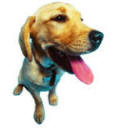
TRAINING TIP
If you do NOT
want the adult dog
on the furniture, do not allow the puppy on the
furniture. Teach the dog that they should look to
you for all resources, including the
furniture. If you want the dog on the furniture,
teach an "on" and "off" Instruction.
Read
more...click here.
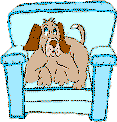
|
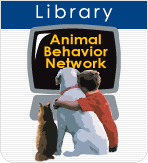 |
|
Help is at your
fingertips by library, email and
phone. |
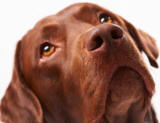
Click on
Library Icon
to learn more
|
Introduction
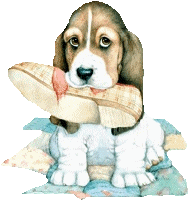 Destructive
behavior occurs for a variety of
reasons. Most commonly, it is a
normal behavior directed toward
an unacceptable object or area.
Dogs need to chew - this is
normal behavior. Destructive
behavior can usually be
attributed to lack of
supervision, inadequate training
(i.e., not redirecting chewing
behavior towards appropriate
objects), and inappropriate chew
toys (e.g., old shoes, socks,
blankets). Addressing these
issues, in most cases, prevents
and resolves the problem of
destructive behavior. Destructive
behavior occurs for a variety of
reasons. Most commonly, it is a
normal behavior directed toward
an unacceptable object or area.
Dogs need to chew - this is
normal behavior. Destructive
behavior can usually be
attributed to lack of
supervision, inadequate training
(i.e., not redirecting chewing
behavior towards appropriate
objects), and inappropriate chew
toys (e.g., old shoes, socks,
blankets). Addressing these
issues, in most cases, prevents
and resolves the problem of
destructive behavior.
|
The key to preventing
household destruction is to
supervise at ALL time until
the rules are learned so
that you can interrupt any
habit before it starts and
teach alternatives. |
Teach your dog to
chew the right things
Encourage the dog to chew on his
or her own chew toys, instead of
household items (e.g., old
shoes, socks, etc.). Encourage
play with "appropriate" toys by
acting extremely interested in
them yourself. For example,
bounce them in front of the dog
and hold them away so the dog
sees that you want it more than
the dog. An unwritten rule
in "dogdom" is that whatever you
have is always better than what
they have. This is similar to
the grass is greener on
the other side that people
experience. Another way
you can make a toy more
desirable is to spread a little
cheese or peanut butter on or
inside it. (e.g., inside a
Kong®).
The key to preventing household
destruction is to supervise at
ALL time so that you can
interrupt any habit before it
starts and provide positive
alternatives. It is important to
catch the dog during the
first
sign of pawing, nibbling, or
chewing an inappropriate object
(observe what was attractive to
the dog, and make a mental note
to come back later and apply a
bitter "taste deterrent" to the
target object).
Interrupt
any unwanted behavior
immediately with a stern
"No,"
and then, redirect the
dog to an appropriate behavior.
With a happy voice, encourage
the dog to do get a chew toy, or
ask the dog to "come"
and "sit," to gain your
good graces and attention.
Praise the dog for the
appropriate behavior and for
showing any interest in
the dog toys.
Before
the house rules are learned...
Prevent destruction by removing objects that might
be accidentally destroyed through tail wags,
brushing of the tail, or bumping while being excited
or running around the house. Remove items of value
and put them in a place where the dog cannot reach
them. Pickup items (including shoes and clothes)
from the floor and put them in a place that the dog
cannot access them (e.g., closet, drawer, etc.).
Stop
destruction by teaching positive activities
1. Teach the dog "contented
confinement."
Read more...click
here

2. Make a portable kennel your dog's most
favorite place. The goal is for the dog to perceive
the kennel as his or her special bedroom (and
softest available bed), dining room (pull the bed
and feed his or her meals inside), and recreation
room where the dog gets to work on getting the
tasty treats out of the food puzzle toy!
3. Teach the dog to chew on his
or her chew toys by demonstrating interest in them
yourself.
4. Anytime you are home and see
the dog showing interest in his or her chew
toys, praise the dog
and lavish the dog with your attention.
5. Rotate 3 - 4 different
toys to prevent all the toys from being boring.
Keeping a toy chest for the dog is useful for this
purpose.
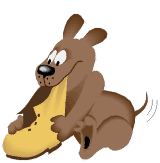 6. If caught in the act of
destruction, verbally reprimand the dog sufficiently
to
stop the behavior (interrupt), after a 3 minute time
out, encourage the dog to do a suitable behavior
(redirect), like chewing on a chew toy. Smile at the
dog and praise with enthusiasm when the dog chooses
an acceptable chewing outlet. The verbal reprimand
should
not continue the
instant the teeth stop committing the crime.
Physical punishment is never
used - it only confuses the
dog and creates anxiety - which, in many
cases, causes the destructive chewing. 6. If caught in the act of
destruction, verbally reprimand the dog sufficiently
to
stop the behavior (interrupt), after a 3 minute time
out, encourage the dog to do a suitable behavior
(redirect), like chewing on a chew toy. Smile at the
dog and praise with enthusiasm when the dog chooses
an acceptable chewing outlet. The verbal reprimand
should
not continue the
instant the teeth stop committing the crime.
Physical punishment is never
used - it only confuses the
dog and creates anxiety - which, in many
cases, causes the destructive chewing.
7. If you find an
inappropriately chewed object, either prevent access
to it or make the target taste bad to the dog.
A home remedy for a taste deterrent is underarm
antiperspirant. Pet stores sell many excellent taste
repellants, as well.
8. Make sure you provide your
pet with daily aerobic exercise outside of the home
and yard. Dogs need mental stimulation from sniffing
and seeing a change of scenery. Spend quality
time training and playing with your dog daily. A
tired, happy dog learns the rules more quickly and
is more eager to please by obeying them. Tired dogs
rarely destroy. |